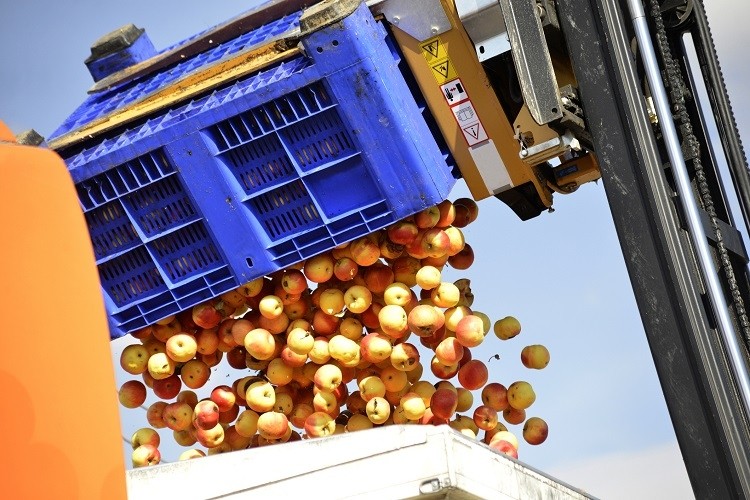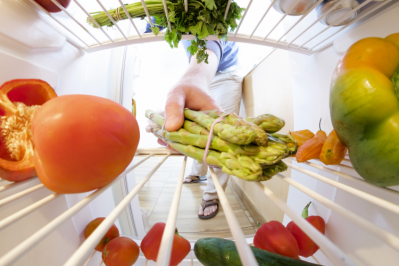How new processing techniques have ‘great potential’ to make food more sustainable

Global food waste figures are well publicised: around one-third of all food produced for human consumption is lost or wasted. If food waste were a country, it would be the third-largest emitter of greenhouse gases behind China and the US.
One way food waste can be reduced, particularly in developed countries, is by limiting the amount of food that is thrown away in the home.
In Norway – where more than 450,000 tons of food is thrown away every year, often because it has passed its expiry date – new research is investigating how new processing techniques can extend shelf-life and reduce food waste.
“We know that there are major differences between raw materials and products when it comes to environmental emissions. Despite the fact that fruits and vegetables produce low levels of emissions, these foods have a short shelf-life,” said researcher Tone Mari Rode from the Norwegian Institute of Food, Fisheries and Aquaculture Research (Nofima).
“Therefore, it is really important to give them a longer shelf-life and avoid having them end up in the rubbish.”
A team at the Norwegian Institute of Food, Fisheries and Aquaculture Research (Nofima), under the four-year ‘iNOBox’ research project, are investigating six innovating processing techniques: high pressure, microwaves, pulsed electric fields, ultrasound, UV light, and plasma-activated water.
Research and industry partners including Campden BRI, University of Liverpool, Norwegian Institute for Sustainability Research (Norsus), Findus, and Fjordland, amongst others.
Finding a replacement for autoclave treatment
It is common for food manufacturers to treat food products using heat in an autoclave – a type of pressure cooker in which microorganisms in the food are inactivated – to ensure food safety and extend shelf-life.
However, according to the iNOBox research team, ‘several’ challenges exist in employing this technology. The heat needed to kill bacteria can impact food quality, and the treatment is often resource-intensive in terms of time, water and energy.
Some of the processing techniques being tested by iNOBox can replace autoclave technology, and in so doing, save on time and cost while having less of an impact on the environment.

“The faster and gentler the food is processed, the better the nature quality is preserved both in terms of taste, colour and nutritional content,” the researchers explained.
Extending egg shelf life with high pressure technology
High pressure processing is an attractive technique, as when food is exposed to extreme pressures – as high as 6000 bar – its shelf-life can be at least tripled compared to a fresh product.
The technique is already used in juice production, ensuring a shelf-life of at least two-to-three months depending on the variety. High pressure processing occurs at room temperature or in chilled conditions, which both preserves the nutritional content and helps preserve taste.
The Nofima team has investigated employing high pressure processing on eggs to extend shelf-life, because while whole eggs have a long shelf-life, the same cannot be said for eggs once cracked or when an egg mass is made.
In the case of egg mass, manufacturers often add preservatives or give it a mild heat treatment to extend shelf-life a little longer. Exposing egg mass to high pressure instead, also extends shelf-life, the researchers found. Other functional benefits also exist.
“When the high-pressure treated egg mass was beaten, foaming increased and the foam retained its volume for a long time without collapsing,” noted the researchers. “The mixture also gained increased emulsification capacity, which can be positive in different types of food processing and cooking.”
Microwaved chicken, anyone?
Another processing technique under investigation by researchers is microwaves. Microwave ovens, they note, are familiar to household kitchens, but aren’t so widely used in the food industry.
A key advantage of using microwaves instead of autoclaves is that the heat load on food is significantly reduced compared to traditional autoclaving.
One trial conducted by researchers involved chicken, which was fried and packaged in two different ways: vacuum and modified atmosphere. Some samples were further processed using high pressure or microwaves. They were then stored at 4°C.
“The vacuum-packed chicken had a shelf life of four weeks, while the high-pressure samples kept for over three months. The microwave samples also showed great potential,” noted the researchers.

Electric fields technology is another processing technique under investigation by Nofima and iNOBox partners. The method describes the exposure of food to electric fields in short pulses of different intensity. “What happens then is that pores form in the cell membrane of the food product. This results in a number of benefits, including making vegetables more flexible or easier to peel, and giving higher yields during extraction,” the researchers explained.
“The method can also kill bacteria in products such as juice, while also preserving the taste and nutrients.”
In Spain, researchers at the University of Zaragoza employed the technology on shortages, which resulted in a ‘much shorter' drying time compared to sausages produced in the usual way. Energy consumption was also reduced by 50%.
UV light on meat, ultrasound on dairy
UV light is already used by the food industry to kill bacteria on a product’s surface. However, the technology is still in development for use on packaged products, because different packaging surfaces can impact how effectively UV light penetrates. If the surface is not smooth, for example, bacteria can hide in folds and cavities.
In the UK, scientists at the Campden BRI institute have investigated UV light treatment on three different types of packaged meat: chicken, pork and beef. “The treatment did not affect colour or rancidity, and the shelf-life was the same as in unprocessed meat products.
“Nevertheless, the scientists see that the technology may have potential in the fight against pathogenic bacteria.”

When ultrasound treatment is applied to a food prior to other processing, it can speed up the subsequent processes, and reduce the amount of energy required. In yoghurt production, the scientists found that the combination of CO2, high pressure treatment and ultrasound can be used to replace traditional homogenisation and heat treatment.
“A combination of these technologies has a positive effect on inactivating microorganisms and enzymes, the rate of fermentation, and the water-holding capacity of yoghurt.”
Novel technology to extend shelf life of fruit and veg
The researchers are also investigating brand-new technology to the food sector. Still in the development stage, plasma-activated water takes electricity, oxygen and nitrogen compounds present in the air, adds them to water which is then used to rinse fruit and vegetables.
If the water is plasma-activated, bacteria will be inactivated and the shelf-life of the produce extended.
Interestingly, not all water from all countries is suitable for this technique, due to water quality and pH values. In Norway, the water is ‘very well suited’ for plasma activation, as is water from England. In Palestine, however, plasma activation had no effect on E.coli bacteria. “This shows that it is important to have control over the water quality when performing such treatment.”
Another plasma-activated water trial saw baby spinach leaves rinsed and compared to baby spinach that has been untreated or rinsed with ordinary water. After eight days of storage, the spinach rinsed using plasma-activated water so no increase in the number of bacteria.
The scientists concluded that the technology ‘has potential’, but more R&D is required before it can be relevant to the food industry.
“The extensive studies we have conducted in this project show that new technologies have great potential to contribute to more sustainable food production,” said Nofima’s Rode.
“A lot of development and documentation remains, but there are many different possibilities that lie in these technologies…”














